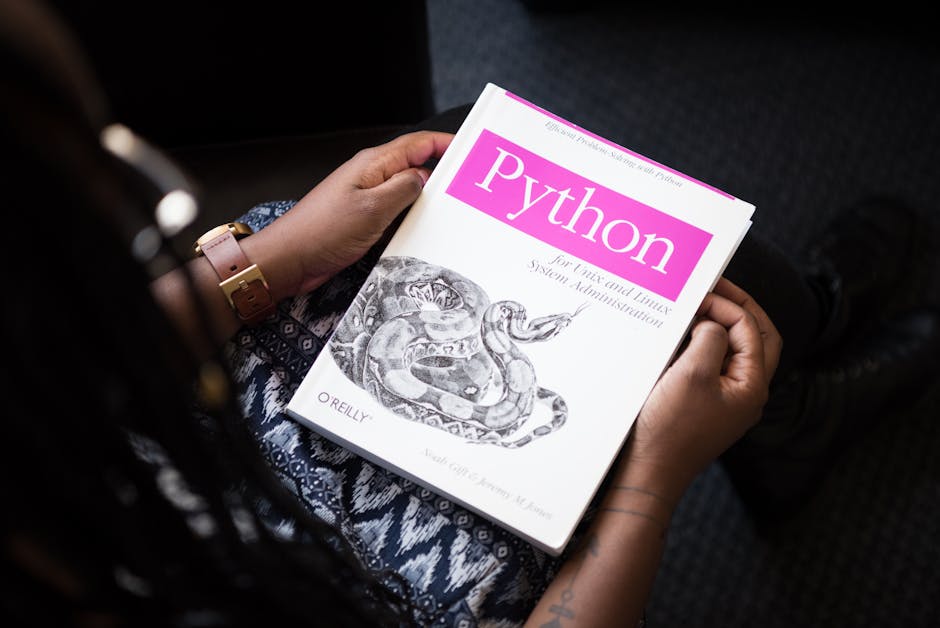Unlock Your Python Potential: The Best Python Tutorials to Master the Language
Learning Python, a versatile and powerful programming language, can open doors to countless opportunities in data science, web development, machine learning, and more. But choosing the right tutorial can feel overwhelming. This comprehensive guide navigates the best Python tutorials available, catering to all skill levels, learning styles, and specific interests. We’ll explore various resources, highlight key features, and equip you with the knowledge to choose the perfect path for your Python journey. Get ready to embark on a coding adventure!
Whether you’re a complete beginner or an experienced programmer seeking to expand your skills, finding the right resources is crucial. This article will help you avoid the common pitfalls of ineffective learning and point you towards the most effective and engaging tutorials available.
Background: The Rise of Python and Online Learning

Python’s popularity has skyrocketed in recent years due to its readability, extensive libraries, and broad applications. The open-source nature of Python and the availability of countless online resources have fueled this growth. Online learning platforms and individual creators have responded by producing a wealth of Python tutorials, catering to diverse needs and preferences.
The Evolution of Python Tutorials
Initially, Python tutorials were primarily found in textbooks and offline documentation. The rise of the internet and online communities changed this drastically. Now, interactive tutorials, video courses, and even gamified learning experiences are readily accessible, making Python learning more engaging and effective than ever before.
Importance of Choosing the Right Python Tutorial

Selecting a suitable Python tutorial isn’t just about finding something that works; it’s about maximizing your learning efficiency and enjoyment. A well-structured tutorial provides a clear learning path, avoids unnecessary complexities, and keeps you motivated. A poor tutorial, on the other hand, can lead to frustration, confusion, and ultimately, a stalled learning process.
Factors to Consider When Choosing a Tutorial
Consider your current programming experience, your preferred learning style (visual, textual, interactive), the specific areas of Python you want to focus on (web development, data science, etc.), and the level of detail you prefer. A beginner’s tutorial will be vastly different from one aimed at experienced programmers.
Benefits of Learning Python Through Effective Tutorials

Effective Python tutorials offer numerous advantages beyond simply learning the syntax. They provide structured learning paths, promote practical application, encourage community engagement, and build confidence. This, in turn, increases your chances of success in your chosen field.
Beyond Syntax: Understanding Concepts
The best Python tutorials don’t just teach you how to write code; they explain the underlying concepts and principles. This understanding is crucial for becoming a proficient programmer, enabling you to solve complex problems and adapt to new challenges.
Building a Strong Foundation
A solid foundation in Python programming opens up a world of opportunities. You can build upon this foundation to explore specialized areas like web frameworks (Django, Flask), data analysis libraries (NumPy, Pandas), and machine learning frameworks (Scikit-learn, TensorFlow).
Step-by-Step Guide: Mastering Python Through Tutorials

Learning Python effectively involves a multi-stage process. Here’s a structured approach to maximize your learning using online tutorials:
1. Assess Your Skill Level
Honestly evaluate your existing programming skills. Are you a complete beginner, or do you have experience with other languages? Choose a tutorial that aligns with your current knowledge.
2. Choose the Right Platform
Numerous platforms offer Python tutorials, including Codecademy, Coursera, edX, Udemy, and YouTube. Each platform has its own strengths and weaknesses, so research to find one that suits your learning style and preferences.
3. Set Realistic Goals
Don’t try to learn everything at once. Break down your learning into manageable chunks and set realistic, achievable goals. Consistency is key.
4. Practice Regularly
Coding is a skill that requires practice. Regularly work through exercises and projects to solidify your understanding and build confidence.
5. Join a Community
Engage with online communities, forums, and discussion groups. This provides a valuable platform to ask questions, share knowledge, and collaborate with other learners.
Examples of Excellent Python Tutorials

The best Python tutorial for you depends on your individual needs and learning style. Here are a few examples of highly-regarded resources:
Beginner-Friendly Tutorials:
- Codecademy’s Python Course: Interactive lessons and hands-on projects make learning fun and engaging.
- Google’s Python Class: Free videos and materials ideal for beginners who prefer a visual learning approach.
Intermediate to Advanced Tutorials:
- DataCamp’s Python Courses: Focuses on data science applications of Python.
- Sentdex’s YouTube Channel: Offers a vast collection of Python tutorials covering a wide range of topics.
Strategies for Effective Python Learning

Maximizing your learning from Python tutorials requires more than just passively watching videos or reading text. Here are some proven strategies:
Active Learning:
Don’t just read or watch; actively engage with the material. Take notes, write code along with the tutorial, and experiment with different approaches.
Project-Based Learning:
Apply your knowledge by undertaking small projects. This helps solidify your understanding and develop problem-solving skills.
Consistency is Key:
Regular practice, even for short periods, is more effective than sporadic bursts of intense study. Aim for consistent learning, even if it’s just 30 minutes a day.
Challenges and Solutions in Python Tutorial Learning
Learning Python can present certain challenges. Understanding how to overcome them is crucial for a positive learning experience:
Overwhelm:
The sheer amount of information available can be overwhelming. Break down your learning into smaller, manageable chunks. Focus on one topic at a time.
Debugging Difficulties:
Debugging is a core skill. Practice regularly and utilize online resources and debugging tools to identify and fix errors efficiently.
Staying Motivated:
Learning can be challenging. Set realistic goals, celebrate your progress, and find ways to make learning enjoyable. Joining a community can provide significant support and motivation.
Frequently Asked Questions (FAQ)
- What is the best Python tutorial for beginners?
- Codecademy’s interactive Python course is a popular choice for beginners. Google’s Python Class is also a solid free option.
- How long does it take to learn Python?
- This depends on your prior experience and dedication. A basic understanding can be achieved in a few weeks, while mastering advanced concepts takes longer.
- Which Python version should I learn?
- Python 3 is the current and recommended version. Most tutorials focus on Python 3.
- Are there free Python tutorials?
- Yes, many excellent free resources are available, including YouTube channels, online courses (like those offered by Google and MIT OpenCourseware), and online documentation.
- What are the best resources for Python practice?
- Websites like HackerRank, LeetCode, and Codewars offer coding challenges and exercises to strengthen your skills.
Conclusion: Embark on Your Python Journey Today
Learning Python is a rewarding journey that can lead to exciting career opportunities and personal growth. By choosing the right tutorials and employing effective learning strategies, you can master this versatile language and unlock your full coding potential. Don’t hesitate – start exploring the wealth of Python tutorials available and begin your coding adventure today!

